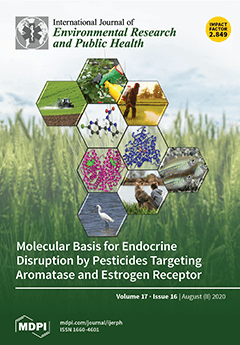Int. J. Environ. Res. Public Health, Volume 17, Issue 16 (August-2 2020) – 382 articles
In this study, glyphosate, thiacloprid, and imidacloprid were tested for their potential binding on two key targets of the endocrine system: aromatase and estrogen receptor. Gyphosate inhibited aromatase activity and decreased estrogen production from androgens. Imidacloprid and thiacloprid bind to the estrogen receptor. All these interactions were partial or occurring at relatively high concentrations. Computational simulations predicted the binding sites and modes of the three pesticides to the two protein targets, providing a molecular model for their action mechanism as EDCs. View this paper.
- Issues are regarded as officially published after their release is announced to the table of contents alert mailing list.
- You may sign up for e-mail alerts to receive table of contents of newly released issues.
- PDF is the official format for papers published in both, html and pdf forms. To view the papers in pdf format, click on the "PDF Full-text" link, and use the free Adobe Reader to open them.





